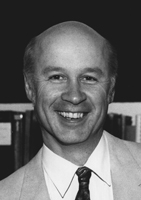Foreword
The impact of 3-D seismic
reflection data in the petroleum industry has been truly significant during
the past three decades. Theoretical studies of the late 1960s and early
1970s have evolved into a technology that has significantly changed the
petroleum industry. 3-D seismic data are now an affordable technology that
can be utilized by major companies and independent petroleum geologists.
Nearly all issues of the AAPG Explorer or The Leading Edge
feature some aspect of 3-D seismic data and their significance to the petroleum
industry. But, in spite of this technology's great impact on the geosciences
community, there are still relatively few published case studies clearly
documenting its importance.
The purpose of this atlas
is to present 30 case studies demonstrating 3-D seismic interpretation
and its confirmation from drilling and production. The atlas includes examples
from around the world, including both exploration and production applications
of 3-D seismic data. Topics included are: (1) the 3-D seismic stratigraphic
expression of features (such as carbonate buildups, fluvial sandstones,
deltas, turbidite systems), (2) the 3-D seismic expression of different
structural styles (such as growth faults, salt features, basement-involved
faulting, reverse and thrust faulting, wrench faults), (3) case studies
that illustrate how 3-D seismic data changed production strategies in field
development, (4) how 3-D seismic data have impacted the exploration of
individual prospects, (5) case studies emphasizing the integration of petrophysical
data with 3-D seismic data, and (6) case studies involving the prediction
of petrophysical properties from 3-D seismic data.
This atlas is unique for
several reasons. First, it is the first joint publication of the AAPG and
SEG since AAPG Memoir 15/SEG Special Publication # 10, Stratigraphic
Oil and Gas Fields was published during 1972. Second, the atlas is
designed to complement the highly successful AAPG Memoir 42, Interpretation
of Three-Dimensional Seismic Data, written and edited by Alistair Brown
(3 editions published), which contained several case studies. Third, because
3-D seismic is best done in color, this atlas is extremely expensive to
print. AAPG and SEG have solicited funds from several companies to help
defray the printing costs of this atlas, making it more affordable for
their members. And fourth, this is the only publication of its kind.
The atlas developed from
conversations in the AAPG Geophysics and Integration Committee during the
spring of 1992, chaired by Ray Thomassen. This atlas exists because many
people freely gave their time and ideas to making this project work. During
the planning and compilation of this volume, several meetings were convened
in various cities between the AAPG and SEG, SPWLA, and SPE. We thank the
following for their help and input in making this atlas a viable project:
AAPG representatives--Ray Thomassen, Gary Howell, Fred Dix, Ken Wolgemuth,
|
|
Anne Thomas,
Cathleen Williams, Susan Longacre, Kevin Biddle, Ken Frakes; SEG representatives--Ken
Brenkman, William Brumbaugh, Pat Lindsey, John Hyden, Don Steeples; SPE
representative--Craig Van Kirk; and SPWLA representatives--Eric Pasternack,
Steve Prensky. We are grateful to the following individuals for helping
us to solicit manuscripts: Ray Buchanan, Robert Graebner, H. P. Mohr, and
Woody Nestvold. We especially extend our thanks to Bob Hardage for his
help in editing the final manuscripts for the atlas. A special thanks to
Mark Chapin, Shell Offshore, and Shell Development Company for permission
to use the figures on the front cover.
In addition to the many planning
meetings, advertisements soliciting papers were published in national and
local society newsletters. We sent solicitation letters for contributions
to the atlas to about 1000 people . We convened a poster session at the
1994 AAPG National Meeting in Denver with interactive displays. Still,
we found publishing 3-D seismic data to be problematic. We concluded that
everyone wants to see 3-D seismic studies, but most companies are reluctant
to share their examples in print. We hope that in the future, as the technology
matures, many more case studies will be published, especially integrating
the reservoir engineering information that is so critical to the integrated
studies. In the near future, CD-ROM and interactive displays are critical
to properly see the information that we print here.
We thank the authors for
their patience, perseverance, and dedication with their manuscript preparation.
We are extremely grateful to Colleen Viele, Peter Varnai, and Jennifer
Crews for their assistance during various stages of the atlas preparation.
Finally, we thank Laurie, Lou, Rudy, Pat, Ryan, Kiefe, and Brett for their
forbearance and patience during the preparation and assembling of this
atlas.
We feel that this atlas is
an important step in the continuing effort to document 3-D seismic interpretation
and its efficacy in petroleum geology. We hope that this volume serves
the petroleum geology community well and helps people find and develop
reservoirs more effectively.
" so there ain't nothing
more to write about, and I am rotten glad of it, because if I'd a knowed
what a trouble it was to make a book I wouldn't a tackled it and I ain't
a going to no more... "
Huck Finn
Paul Weimer
AAPG Representative
University of Colorado
Tom Davis
SEG Representative
Colorado School of Mines
Boulder-Golden, Colorado
December 1995
Paul Weimer and
Tom Davis |


